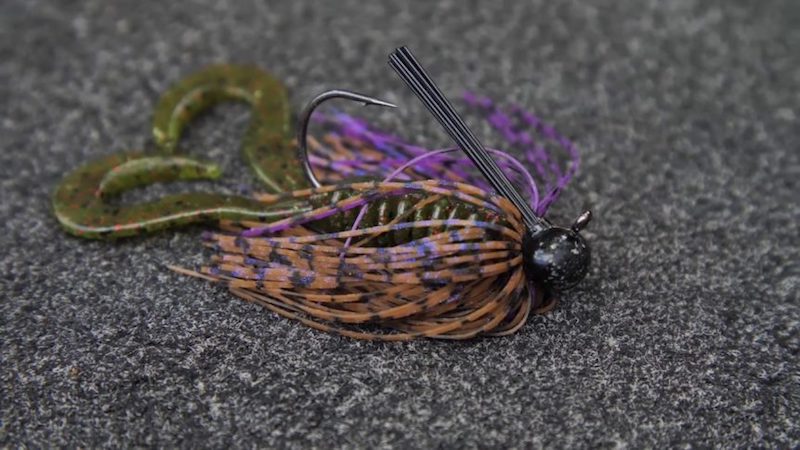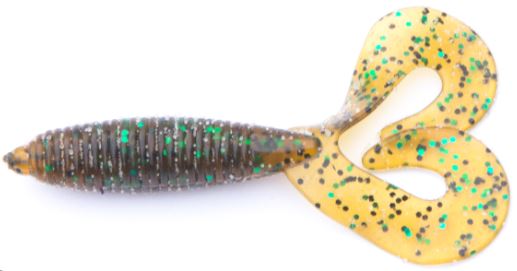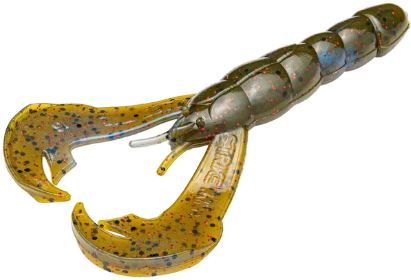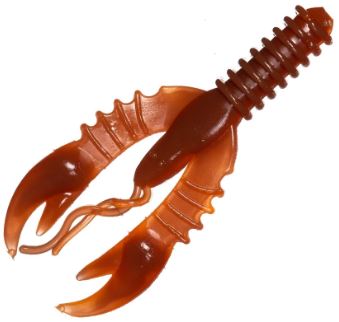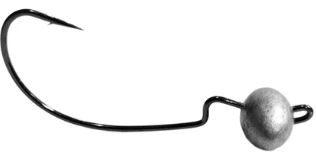How to Fish a Football Jig: Time, Location, Retrieval, and More
Jigs are the most popular bass lures out there. Every angler seems to keep a jig of some kind tied on at all times.
They are extremely versatile and effective. But not all jigs are the same. The football jig has a very unique design and is often the best jig for the situation.
Now that we know that football jigs are unique and effective, now we need to know how to fish a football jig.
What is a Football Jig?
Simply put, a football jig is a style of bass jig that has a football shaped jig head.
The football shape of these jigs serve a couple specific purposes.
Firstly, the wide shape helps to keep the jig from getting stuck in between rocks.
Other jigs have pointed jig heads that easily get wedged between rocks and get stuck.
The football jig is much better at staying outside of rock creases and coming over rocks.
Secondly, the big, wide shape of the jig head displaces much more water and is much easier for bass to detect in the water.
Football jigs primarily imitate crawfish. Some people will say they mimic bluegill as well, but I never throw them anything but a crawfish imitation.
Football Jig vs Swim Jig
Swim jigs have a pointy head shape with the eye hole at the front of the lure. This allows it to swim and glide through the water better.
This is important because swim jigs are fished by reeling them or popping them in quickly. Hence the name “swim jig”.
Football Jig vs Flipping Jig
Flipping jigs have a bit pointer jig heads with a stiffer weed guard. This allows them to be fished in the heaviest brush, lily pads, and man-made structure.
When to Use a Football Jig?
Football jig are made to be fished on the bottom. So you want to use them when bass are low in the water column and holding close to the bottom.
My favorite times of year to fish them are the dog days of summer, late fall, and early spring.
During these seasons, lots of largemouth and smallmouth bass will be out deep and looking for a meal low in the water column.
A couple other great football jig situations are during and after a cold front, and in clear water.
Where to Use a Football Jig?
The best place to throw football jigs is deep, rocky water. Football jigs are made to imitate crawfish.
And crawfish hangout in the rocks. If you are fishing grass, docks, or wood, then you are much better off using a different jig style.
But in deep, rocky water, nothing beats a football jig. The high water displacement makes it better suited for deep, open water because bass can find the jig easier.
And the wide head shape keep it from getting stuck in the rocks. Other great places to throw them are ledges, channels, and rocky points.
How to Retrieve a Football Jig
The universal favorite retrieve technique for a football jig is simply dragging it along.
It is a simple and fool proof retrieval that doesn’t require any expertise. Just cast out, let the jig sink to the bottom, and then start slowly drag it along the bottom with a sideways sweep of you rod.
This retrieve gives the jig a realistic crawfish motion. With constant tension in your line, you have lots of sensitivity and can easily detect bites.
Adding in some occasional hops to the retrieve can give off some extra action and trigger reaction strikes.
Although this is the most popular retrieve, feel free to play around with the jig and find what works best for you.
Best Football Jig Trailers
Like I said earlier, I am always trying to mimic crawfish with these jigs. So the only football jig trailers I use are craw style trailers.
Double Tail Grub
The curly tail grub style trailer gives off action very easily. Even slow drags or hops will get the tail swimming.
The double grub trailers mimic the claws of a crawfish, making it a great football jig trailer.
Rage Craw
The Rage Craw is probably the most popular jig trailer on the market. The claws of this bait flap extremely hard and put off tons of vibration.
This makes the Rage Craw my go-to trailer for stained or muddy water.
Actionless Trailers
This style of trailer doesn’t have any flapping or vibrating action. But the claw and body design are very realistic.
These are ideal for very clear water when you don’t need as much action and bass can get a real good look at the lure.
These are also perfect for jig fishing in the winter, when you want less action.
What Line Do You Use for a Football Jig?
I like to use 15-20 pound fluorocarbon line. Sometimes I will use braid with a monofilament leader if I wan to get a bit more casting distance.
But most of the time, I stick with straight fluorocarbon. You don’t want to go any higher than 20 pound line because it will make the football jig sink slower and rise off the bottom too easily.
You also don’t want to use straight mono, because it has too much stretch. The excessive stretch will prevent you from getting a proper hook set.
Finesse Football Jig Heads
If you are getting bites from your football jig but the bass don’t seem to be fully eating the jig, switch up to a finesse football jig head.
These are skirtless jig heads with a traditional weedless hook.
Because these jigs don’t have a big weed guard, bass are more willing to fully eat the bait and are hooked much easier.
The finesse football jigs out perform a traditional football jig when bass are finicky and won’t fully commit to the bigger, skirted profile.
Key Points
- Football Jigs Are Unique and Effective:
- Football jigs feature a distinct football-shaped head design, which offers advantages such as maneuverability through rocks and increased water displacement.
- They primarily imitate crawfish, making them effective in situations where crawfish are prevalent.
- Differentiating Football Jigs from Other Jigs:
- Compared to swim jigs and flipping jigs, football jigs have specific characteristics suited for bottom fishing in rocky areas.
- Ideal Conditions and Locations for Football Jigs:
- Best used when bass are low in the water column and holding close to the bottom, particularly during the dog days of summer, late fall, and early spring.
- Most effective in deep, rocky water where crawfish are abundant, such as ledges, channels, and rocky points.
- Optimal Retrieval Techniques:
- The preferred retrieval method involves slowly dragging the jig along the bottom with occasional hops to mimic the natural movement of crawfish.
- Experimentation with retrieves is encouraged to find what works best in different situations.
- Suitable Trailers for Football Jigs:
- Craw-style trailers are recommended to mimic crawfish, with options such as double tail grubs, Rage Craws, and actionless trailers depending on water clarity and bass behavior.
- Recommended Line Choices:
- 15-20 pound fluorocarbon line is commonly used for football jigs, offering sensitivity and minimal stretch for effective hook sets.
- Finesse Football Jigs for Finicky Bass:
- Finesse football jig heads are skirtless and feature a traditional weedless hook, ideal for situations where bass are hesitant to fully commit to larger profiles.
Reeling this In
Football jigs are a great bass lure and are often over shadowed by flipping jigs or swim jigs.
But when it comes to deep water or rocks, the football jig is the best jig for the job.
There is just something about the jig that catches tons of big bass.
As with any lure, it takes a bit of practice and experience to master, but the football jig is an essential lure to have in your rotation.

